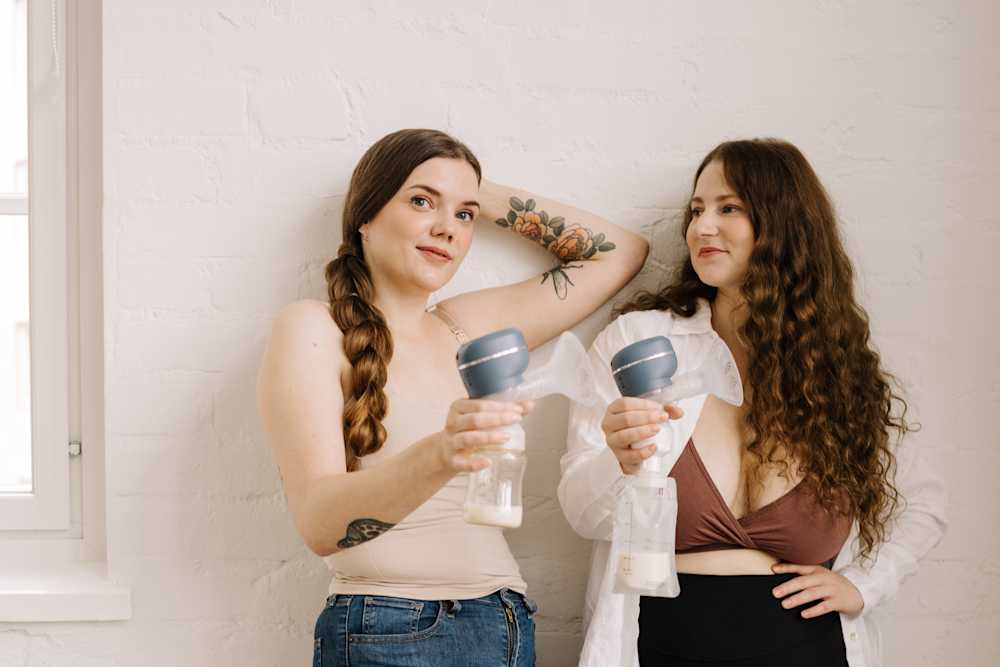Founded in 2018 by two Finnish mothers, Lola&Lykke is known for its high-quality breastfeeding products, including award-winning electric breast pumps. Committed to product safety, the company has had its products tested at Measurlabs for four years. Third-party laboratory testing is crucial in ensuring that the pump does not leach harmful chemicals into the milk, which could pose a risk to infants.
Due to the vulnerable user group, special attention should be paid to the safety testing of breast pumps. This principle is well-reflected in EU legislation, which sets particularly rigorous safety requirements for materials that come into contact with foods intended for infants and young children.
Ensuring breast pump safety, one component at a time
EU legislation on food contact materials (FCMs) requires manufacturers to ensure that no harmful chemicals, off-flavors, or odors migrate from materials into food. These requirements apply to all parts of a breast pump that come into contact with milk. Additionally, parts that are used directly for feeding, such as baby bottles or teats, must meet the requirements of the EN 14350 standard for drinking equipment designed for young children. This standard outlines additional tests for assessing properties such as nitrosamine release and mechanical durability.
Breast pumps are structurally more complex than most other food contact materials, and each component should be evaluated separately – with tests tailored to material type and duration of contact with breast milk.
“Measurlabs’ experts have been invaluable in preparing detailed testing plans for the individual components of our products, accounting for all the regulatory requirements. We have been impressed with their in-depth expertise in EU-level and national legislation,” says Lola&Lykke CEO Laura McGrath.
Food contact material testing expert Niko Markkinen elaborates on the various safety references that apply to different parts of a complete breast pump set: "The plastic parts of the pump must comply with the EU plastics regulation, while silicone and rubber are typically tested according to German national regulations, as no harmonized chemical quality parameters exist at the EU level. For baby bottle components first brought to market in Finland, additional heavy metal release tests with exceptionally strict limits are also required."
Streamlining compliance, from testing to documentation
In addition to providing testing services, Measurlabs has supported Lola&Lykke in preparing compliance documentation for their breast pumps. For food contact materials, the Declaration of Compliance (DoC) is a mandatory product safety document that should be provided to retailers to prove that appropriate safety evaluations have been completed.
"We really appreciate the all-in-one service, getting both the tests and the DoC from a single provider. Collaborating with Measurlabs has enabled us to present retailers and regulatory authorities with detailed proof of product safety, helping us bring our products to market quickly," Laura McGrath says.
Making product safety information accessible to consumers
With the recent implementation of the new EU General Product Safety Regulation (GPSR), companies must make product safety testing more clearly visible to consumers. One key requirement is disclosing safety-related information – such as the manufacturer’s name, address, and website – on online retail platforms, ensuring that consumers can look into the background of the product and its manufacturer.
However, according to Laura McGrath, some sales platforms still fail to provide GPSR-compliant information or systematically verify product safety certifications. She urges consumers to check for themselves whether proper safety testing has been conducted. To help Lola&Lykke customers do this, the company shares information about product testing on its website, and customers can request to see the test reports.
“We want to make it clear to consumers that we take full responsibility for the safety and compliance of our products and that we have had them tested by rigorous standards. This way, mothers can be confident that milk expressed with our breast pumps is safe for their babies,” Laura McGrath concludes.

